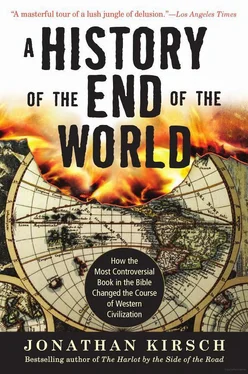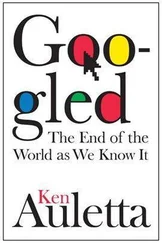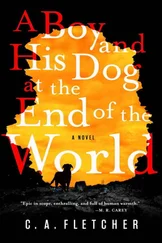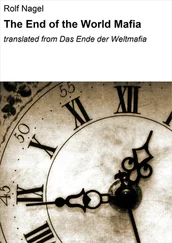“One might have thought it a foreshadowing of Christ’s kingdom,” enthuses Eusebius, “and a dream rather than reality.” 28
The stark contrast between what John predicted and what had actually come to pass in imperial Rome prompted some pious but also practical men in the Christianized empire to conclude that Revelation must be contained, or cut out of the Bible altogether. The same cognitive dissonance prompted other Christians to go to extraordinary lengths to explain away what seemed to be a collection of misbegotten and wrongheaded visions. Both the attackers and defenders of John’s little book were coming at the same awkward problem from opposite directions—the fact that Christian emperors were now sitting on what John sees as the throne of Satan.
Indeed, the single biggest problem with the book of Revelation is the plain fact that the world did not end. John insists that he has been shown “the things which must shortly come to pass”—and yet, as the years, decades, and centuries passed, Rome still ruled the world. 29For those Christians in late antiquity who regarded the book of Revelation as the revealed word of God, the manifest failure of its prophecies was embarrassing but undeniable.
“As history, in other words, persistently failed to end on time,” explains historian and New Testament scholar Paula Fredriksen, “the Church, of necessity, had to come to terms with its own foundational prophecy.” 30
John, of course, is not the only biblical figure whose predictions of the end of the world turned out to be wrong or, at least, grossly premature. The book of Daniel, as we have seen, seems to confidently predict that the end of the world would come exactly 1,290 days after “the abomination of desolation is set up.” 31Of course, the author is maddeningly oblique in describing the event that is supposed to start the countdown clock—the “abomination of desolation” is probably a pagan image that was installed in the Temple at Jerusalem by the Syrian conquerors of Judea in the second century B.C.E.—and he undercuts his own credibility by stating, only one verse later, that the waiting period is actually 1,335 days. But the author assures his readers that such ambiguities and contradictions need not trouble the true believer—a credo of Bible prophecy that is invoked even today.
“None of the wicked shall understand,” the author Daniel writes, “but they that are wise shall understand.” 32
Jesus, too, is depicted in the Gospels as announcing that the end is near. In fact, he quotes the book of Daniel—“Therefore when you see the ‘abomination of desolation,’ spoken of by Daniel the prophet, standing in the holy place (whoever reads, let him understand), then let those who are in Judea flee to the mountains” 33—and his description of the end-times is equally heart shaking but far more poignant when compared with those in Revelation. “And alas for those who are with child and for those who give suck in those days!” Jesus is shown to say in the Little Apocalypse as it appears in the Gospel of Matthew. “Pray that your flight may not be in winter or on a sabbath. For then there will be great tribulation, such as has not been from the beginning of the world until now.” 34
Jesus, as we have noted, insists that at least some of his contemporaries will be eyewitnesses to the end of the world—eclipses of the sun and moon, stars falling from the sky, “famines and pestilences and earthquakes” 35—and the arrival of the Son of Man “in the glory of His Father with the holy angels.” 36His assurances, so awkward for later teachers and preachers precisely because they are so plainspoken and yet so plainly wrong, can be found in both Mark—“Truly, I say to you there are some standing here who will not taste death before they see that the kingdom of God has come with power” 37—and Matthew: “Truly, I say to you, this generation will not pass away till all these things take place.” 38
Indeed, the first Christians lived with the constant and urgent expectation that they would witness the end of the world. Paul’s First Epistle to the Thessalonians, for example, describes what has come to be called the “rapture”—that is, the sudden elevation of faithful Christians from earth to heaven upon the second coming of Jesus Christ: “For the Lord Himself will descend from heaven with a shout, with the voice of an archangel, and with the trumpet of God, and the dead in Christ will rise first,” says Paul. “Then we who are alive and remain shall be caught up together with them in the clouds to meet the Lord in the air.” 39Paul’s unequivocal prediction, in fact, is contained in a letter that may have been composed as early as 49 C.E.—“the earliest datable witness to Christianity that we possess,” according to some scholars. 40
But the New Testament also includes writings that seek to tamp down the apocalyptic expectations of early Christians. Significantly, Paul’s Second Epistle to the Thessalonians backs off from the promise that the end is near, which is one reason why it is generally regarded as having been written much later than the First Epistle and by someone other than Paul. “Now concerning the coming of our Lord Jesus Christ and our assembling to meet him, we beg you, brethren, not to be quickly shaken in mind or excited, either by spirit or by word, or by letter purporting to be from us, to the effect that the day of the Lord has come,” Paul is made to say in the second letter. And then he adds what appears to be a reference to the end-time scenario of Revelation: “Let no one deceive you in any way; for that day will not come, unless the rebellion comes first, and the man of lawlessness is revealed, the son of perdition.” 41
Jesus himself pointedly rules out any sure knowledge of when the world will end. “When you hear of wars and rumors of war, do not be troubled, for such things must happen, but the end is not yet,” 42Jesus is quoted as saying in a famous passage in the Gospel of Mark. In fact, Jesus specifically warns against “false Christs and false prophets” who will seek to lead good Christians astray by claiming to know the date or details of the end-times. 43And Jesus insists that no one in heaven or on earth—not even himself!—has been granted a revelation about the date of doomsday. “If anyone says to you, ‘Look, here is the Christ!’ or, ‘Look, He is there!,’ do not believe it,” Jesus is shown to say. “But of that day and hour no one knows, not even the angels in heaven, nor the Son, but only the Father.” 44
Of course, Jesus may have cautioned his followers against idle speculation on the date of the end of the world, but his words did nothing to stop some readers of the book of Revelation from doing exactly what he tells them not to do. Indeed, the whole effort to crack the code of Revelation has always struck some pious clerics as unseemly and even sinful: “The numerous attempts by His professed followers to attain precise knowledge seem to me to be evidence of serious disloyalty to Him, Who announced that the secrets they vainly try to fathom are reserved for God Himself,” writes H. H. Rowley. 45But such cautions have not prevented countless generations of visionaries, ranging from the prophetesses Prisca and Maximilla to the Bible-thumping televangelists and best-selling authors of our own era, from convincing themselves—and seeking to convince others—that they know when the world will end.
Revelation is not the only ancient writing that was regarded as too hot to handle by some clerics in the early years of the Christian church. At a site in the Egyptian desert called Nag Hammadi, for example, a collection of papyrus texts—the so-called Gnostic Gospels—were buried in the sand by some fearful Christian precisely because they had been declared to be heretical by the authorities of the church. Among the forbidden texts of early Christianity were a great many apocalyptic tracts, including one that preserves a sly parody of perhaps the single most familiar line in the book of Revelation.
Читать дальше










